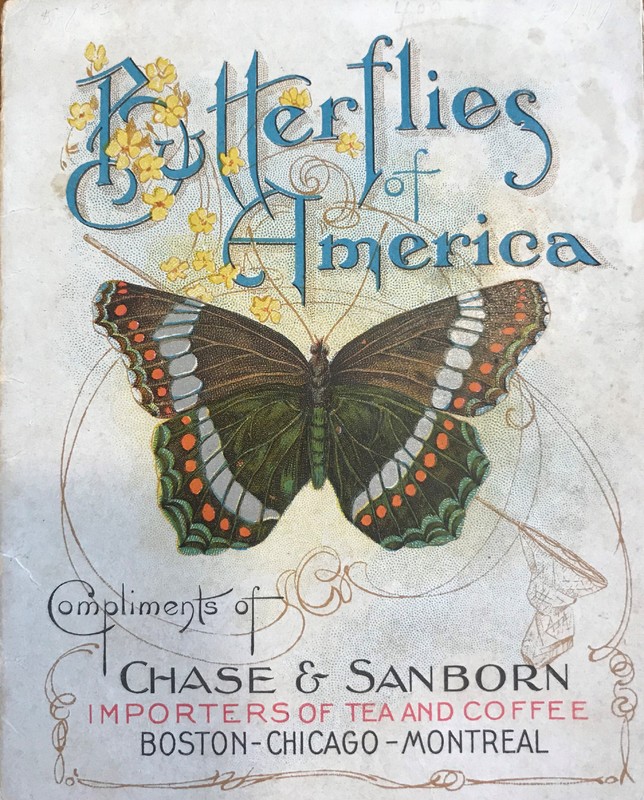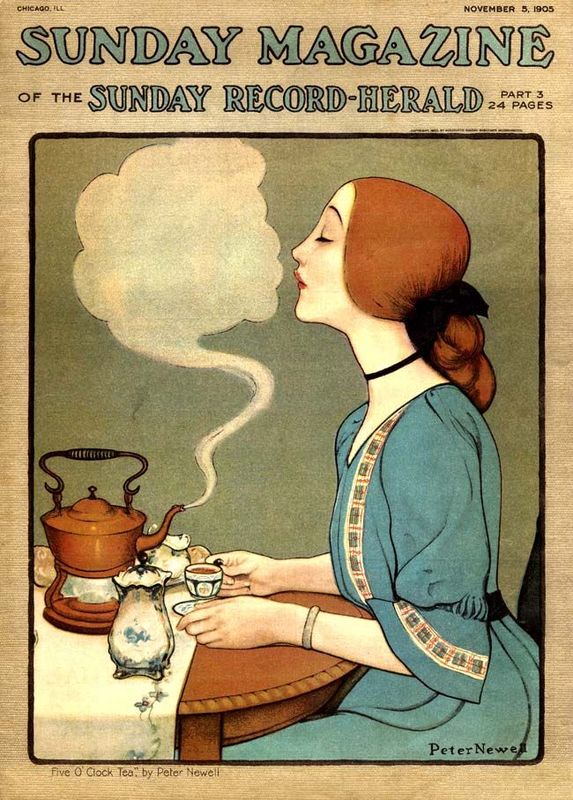1900s: The Effects of Industrialization
The turn of the 20th century marked a period of rapid industrialization and urbanization. As people moved to cities like New York City and Chicago to work in factories, class distinctions began to arise between the low-level laborers and the owners of the factories (Reeves 12). The laborers were being paid very little for long hours of work while the owners were making an immense profit, and these differences in wages determined who the target audience was for advertisers (Reeves 10). The middle and upper class held a majority of the wealth in America, so advertisements played into values and ideas that would appeal to them. Moreover, since within these classes women were the primary consumers while men were the primary breadwinners advertisements gave the message that these roles were natural and women should accept them.
The 1900 Chase and Sanborn “Butterflies of America” pamphlet emphasizes this message while notably lacking an image of an actual woman. The main image instead is that of a butterfly, which can be understood as a feminized symbol: butterflies are thought to be delicate and beautiful, two traits that are traditionally associated with women. The butterfly is the cover of the pamphlet so the consumer is immediately confronted with this symbol, and whether they realize it or not they come to associate the product with women. This subtle symbolism supports Ramamurthy's assertation that “[a]dvertisers… are not afraid to appeal to the non-conscious and subconscious mind,” for in choosing the butterfly Chase and Sanborn promotes a more covert feminization of tea (367).
Turning to the back of the pamphlet there is a paragraph describing how Chase and Sanborn products can help in the domestic sphere. From the first sentence the homemaker is established to be female: “[t]he intelligent housemaker knows that she homemaker as well.” The language used to describe women is objectifying in the literal sense, as the pamphlet says “she provides the chiefest charm and ornament” and lists “the happy women” alongside “the shining dishes, [and] the snowy linen.” The consequence of this rhetoric for the female consumer is that they begin to internalize the idea of their role as the homemaker and are less likely to fight against it, leading to the perpetuation of these harmful stereotypes. From the perspective of the advertiser, this rhetoric is a direct response to the increase in female activism in areas like suffrage and laborer rights. The Progressive Era saw leaders like Ida Tarbell and Jane Addams calling for change in a number of areas and finding success, which was concerning to many large corporations who were the target of many of these movements (Reeves 26). By telling women that their role is in the home the advertisers are hoping to reinvoke the image of women drinking tea in a parlor room and in order to curb activism.
The 1905 Sunday cover of the Record-Herald continues to exemplify the societal expectations of middle to upper-class women. It depicts a woman sitting at a table drinking a cup of tea by herself, with a kettle in the center billowing smoke in the shape of a face. The face can be inferred to be male, as it appears to have shorter hair and the woman is leaning into it as if to kiss the face. The woman’s appearance marks her as wealthier as she is wearing an immaculate blue dress with white trimming and her hair is neatly tied back. This image solidifies the fact that this magazine is meant to be read by those who have extra money to spend, and given that the cover features tea it is also making the statement that tea is only for the wealthy.
The cover is interesting as it depicts the woman drinking tea alone, whereas with the Chase and Sanborn pamphlet it was implied that women would be making tea for her family. The idea of family is still present in this image, as the woman is most likely seeing the image of her husband or partner in the smoke. The fact that even when she is alone she is depicted as thinking of her partner reinforces the idea that a woman’s worth is tied to a man and that she is always patiently awaiting his return. It also works to shape ideas about sexuality during this time, as the cover as well as the pamphlet center around a heterosexual family. Sexuality was a taboo subject, with young girls being told that “continence was… the ideal marriage relationship,” which is why in the image the woman appears to be in a state of restraint (Reeves 15). The Record-Herald capitalizes on the idea of the chaste woman by presenting the viewer with a woman who is trying to resist the face of the smoke to show that this is how a proper woman should act.


